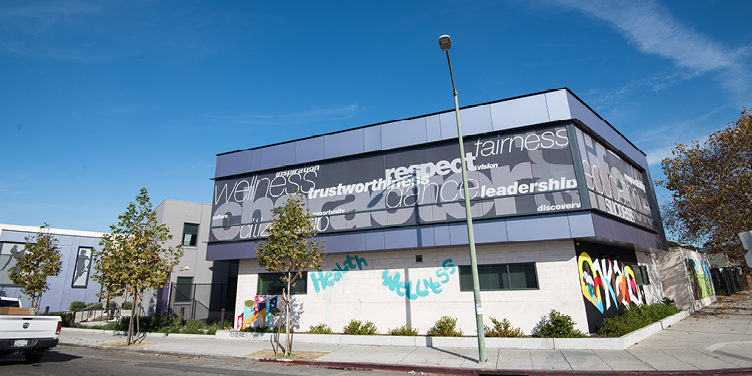Photo: East Oakland Youth Development Center in Oakland, CA. Community Vision provided EOYDC with $8.5 million of New Markets Tax Credits (NMTC) toward a total project budget of $9.75 million to finance the renovation and expansion of its program and headquarters space.
Last week, the US Senate approved the Tax Cuts and Jobs Act by a 51-49 vote. The House and Senate have now formed a conference committee to reconcile this bill with the House version passed last month. Most observers believe the final version will closely resemble the Senate bill and that it will become law.
Community Vision joins a nearly unanimous community development sector in deploring the likely effects of this legislation for low- and moderate-income people, including tax hikes and new obstacles to homeownership, access to education, and saving for retirement. It also makes programs like Medicare, Medicaid, and food assistance vulnerable to cuts as federal tax revenue decreases. And by eliminating the individual health insurance mandate, it will deliver higher premium costs and likely cause 13 million Americans to lose health insurance.
We are particularly concerned about provisions of the tax reform bills that affect community development finance. This is especially true for the New Markets Tax Credit program (NMTC), which is zeroed out in the House bill but extended in the Senate bill. Community Vision has used NMTCs to help attract over $400 million in investment to communities from Fresno to Chico to Watsonville, as well as in the Bay Area. These projects improve distressed neighborhoods, build opportunities for low-income jobseekers, and house vital community organizations like health clinics and youth development programs.
Community Vision has also focused on threats to Low-Income Housing Tax Credits (LIHTCs), which our affordable housing partners depend on to help solve California’s housing crisis. The House tax reform bill would cut the LIHTC program sharply and impose new taxes on the private activity bonds (PABs) that are used in conjunction to raise capital for affordable housing construction.
Our portfolio contains nearly $17 million in affordable housing lending that, with the help of LIHTCs and other subsidies, is helping to create or preserve more than 700 units of affordable housing. Losing these programs would decimate development at the peak of our affordable housing crisis. Recent state-level wins to boost affordable housing – described in our last enewsletter – would largely be wasted.
Even if NMTCs, LIHTCs, and PABs all make it through reconciliation, the efficacy of all these programs will be in doubt as the corporate tax rate drops from 35% to 20%. When taxes get lower, offsetting tax credits become less valuable to investors. In the best-case scenario where all of these programs survive, the market conditions that make them work may not.
CDFIs have faced big challenges before, and can be proud of the ways we have found to provide creative and flexible financing for vital community facilities and affordable housing. The plot line is still coming together, but it appears that a new chapter in that story is beginning. Let us imagine and hope for a happy ending.





